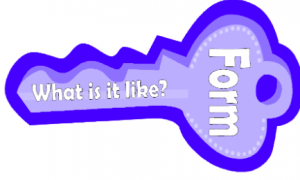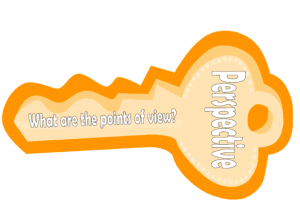Over the past few weeks, our Kindergarten students have been exploring the key concepts, form and perspective during our “How We Express Ourselves” unit, “Communicating Through Art.” Related concepts, including emotions, communication, self-expression, line, shape, movement and color, have driven the inquiries within, and often across the disciplines.

Using Related Understandings
The #ibpyp has reaffirmed the related concepts as integral to the teaching and learning in a PYP classroom. I find that an increased focus on the related concepts makes the learning much clearer and more accessible to students. Taking them further and creating additional, “related understandings,” provides learners with an opportunity to work towards learning goals that are directly linked to Scope and Sequence requirements. While doing so, they are building an understanding of conceptual relationships that support understanding of the key concepts and central idea. Here are some of the related understandings I have been using to drive the learning in our current unit:
- We can express our ideas and emotions through art.
- Artists make choices when creating their art, which may make their audience feel or think a certain way.
- People can have different ideas about a piece of art.
- Having, sharing and respecting different ideas, helps us to see things in new ways and increase our understanding.
- We must be listeners as well as speakers in order to have effective communication.
Understanding Concepts
A few weeks ago I introduced the Visible Thinking routine, Looking 10 x 2 to my students. We have since used the routine several times as the students develop their understanding of form and how we can describe what we see. This was described in my post on transdisciplinary learning. As students became more adept at the routine, we started sorting their responses into two groups: attributes that we could point out for everyone to see, and ideas that they had about the art. This brought us to the key concept, perspective, which became a conceptual focus for the ensuing learning.
Above Media: Three students worked together to share what they saw and what they thought of this van Gogh painting. They attempted to sort the recordings by putting the things they saw that they wanted to point out right on the painting and by putting their ideas to the side of the painting.
After a discussion to establish a common definition of perspective, “when people have different ideas about something,” we continued our inquiries with that concept in mind. As we explored and discussed art, stories, and even recess preferences, the concept of perspective kept coming up. Here are some of the ideas that the kindergarten students were overheard expressing last week: #yestheycan
- It’s ok if we don’t agree.
- I have a different idea about the painting than my group!
- Just because I have a different idea, doesn’t mean I don’t like you.
- I’m glad that you shared your thinking because now I am changing mine.
- It’s good to be different.
- I like it when you say you agree or disagree with me. (this was in the context of “it shows you were thinking about what I said and not just your own ideas)
- We can’t just say it, we should have reasons for our ideas!
Looking Ahead
The last idea mentioned is where we will pick up. During our next morning meeting, we will go back to this student’s idea about needing to have reasons for our ideas. From there, we will plan together to see how we might explore that idea further in the context of our unit, “Communication Through Art.”
